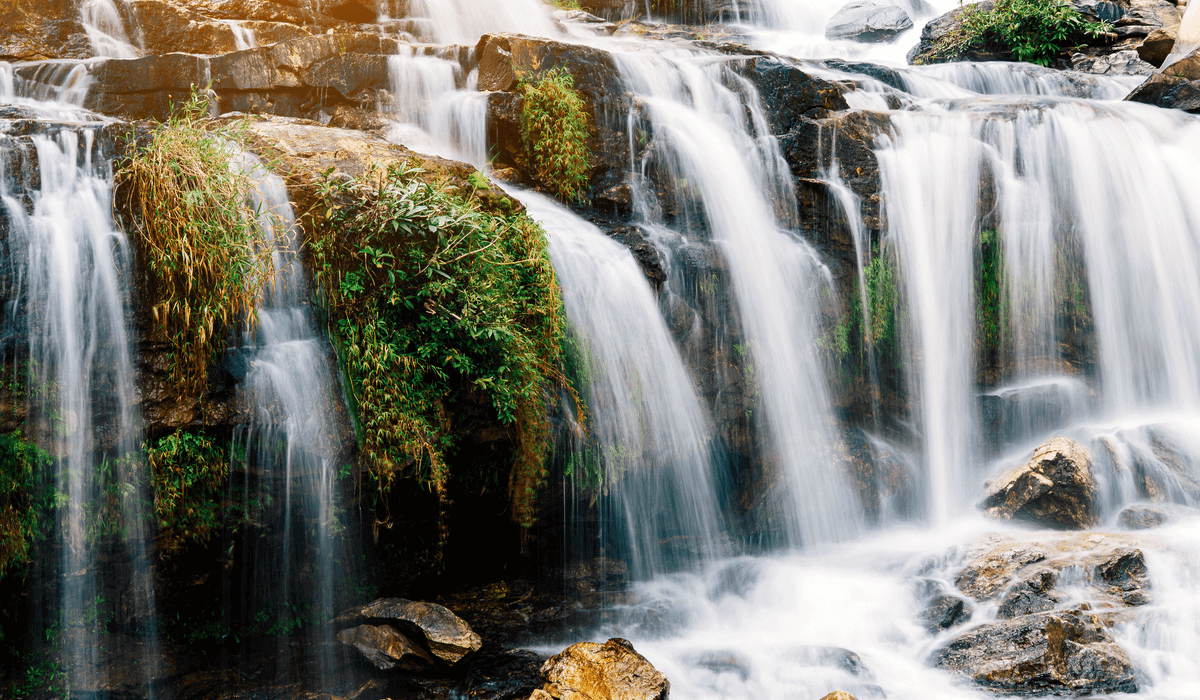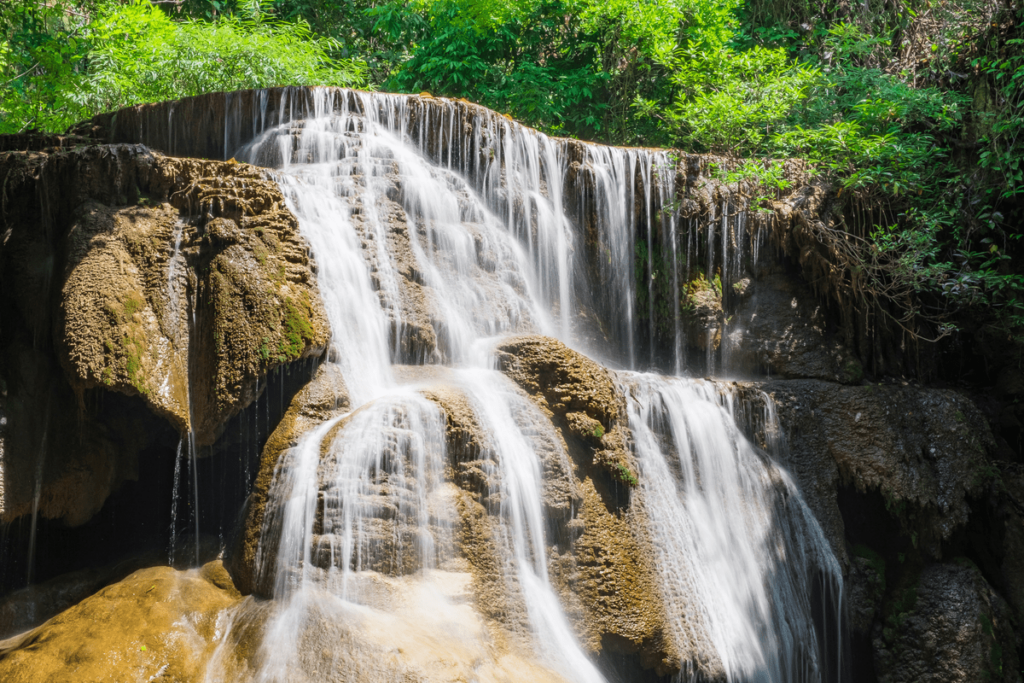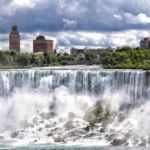Famous Waterfalls Around the World

Niagara Falls (USA/Canada): Straddling the border between the United States and Canada, Niagara Falls is one of the most famous waterfalls globally. Comprising three parts—Horseshoe Falls, American Falls, and Bridal Veil Falls—it boasts an immense flow rate of over 6 million cubic feet per minute.
Angel Falls (Venezuela): The world’s tallest uninterrupted waterfall, Angel Falls, plunges 3,212 feet from Auyán-Tepuí mountain in Venezuela. The water’s long drop turns into mist before reaching the ground, creating a mystical effect.
Victoria Falls (Zambia/Zimbabwe): Known locally as “Mosi-oa-Tunya” or “The Smoke That Thunders,” Victoria Falls is one of the largest waterfalls. Its vast width of over a mile and height of 355 feet create a powerful spectacle, with mist visible from miles away.
Iguazu Falls (Argentina/Brazil): A system of 275 falls along the Iguazu River, Iguazu Falls is a stunning natural display. The falls span the border between Argentina and Brazil, with the “Devil’s Throat,” an 80-meter-high U-shaped cliff, being the most famous section.

Ecological Importance
Waterfalls create unique habitats that support diverse ecosystems. The mist and humidity around waterfalls foster lush plant life, including ferns, mosses, and unique flowering plants. These areas often serve as refuges for various species of amphibians, insects, and birds. The pools and rivers formed by waterfalls provide oxygen-rich environments crucial for fish and other aquatic organisms.
Waterfalls also play a vital role in shaping the landscape. The erosive power of falling water carves out valleys and gorges, contributing to the dynamic nature of Earth’s surface.
Cultural Significance
Throughout history, waterfalls have held cultural and spiritual significance for many societies. Often seen as sacred places, they embody the presence of gods or spirits. Many cultures consider waterfalls as sites for pilgrimage, meditation, and ritual. Their sheer power and beauty have inspired artists, poets, and musicians, becoming symbols of purity, strength, and the relentless passage of time.

Conservation Efforts
Despite their rugged nature, waterfalls and their surrounding ecosystems face threats from human activities such as deforestation, dam construction, and climate change. Conservation efforts are crucial to protect these natural wonders. Establishing protected areas, promoting sustainable tourism, and engaging in habitat restoration are key strategies to preserve waterfalls and their ecosystems for future generations.









